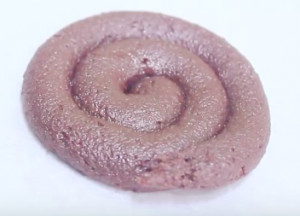Intro : Curry is one famous food people eat. You can even see two different style of curry just on the Guadalupe street, vietnamese and Indian. I love curry and I thought it is a good chance to research about curry and find out some interesting things I did not know. History of curry, different styles of curry in many different countries. Also the spices that goes in makes difference too.
- “Spice World: 10 Top Countries for Curry – Hostelbookers.” com Blog. N.p., 03 Apr. 2012. Web. 28 Feb. 2017.
This site gives information about curry in 10 different countries, Britain, Thailand, Japan, Malaysia, China, Myanmar, Jamaica, Vietnam, Indonesia, and India. It points out unique styles of curry for each country and suggests the best curry place or restaurants in those countries. It does not seem to have any author’s thought in it, just informative type of writing.
- Dimbleby, Henry, and Jane Baxter. “The Secret to Making Great Curry.” Back to Basics. Guardian News and Media, 31 Oct. 2014. Web. 01 Mar. 2017.
This article is written by an author who actually cooked Indian curry and tries to give some tips and recipes of her own. She describes cooking Indian curry as learning four major chords in playing guitar, that we need to know only few spices that goes in which is impotant and that spices does not only bring the flavor but also the texture. Then she introduces two basic Indian curry recipes which takes less than an hour to make. To me this article was trying to make reader approach cooking curry easily and make the readers familiar with cooking. It also had informative characteristic.
- Hunt, Kristin. “A Beginner’s Guide to the Curries of the World.” Thrillist. Thrillist, 16 Mar. 2014. Web. 01 Mar. 2017.
This article also introduces different styles of curry in 12 countries, India, Malaysia, Thailand, Indonesia, Cambodia, Vietnam, UK, South Africa, Trinidad & Tobago, Japan, Pakistan, and Sri Lanka. This time it gives actual names or menus that are famous in each country and briefly explains what they are made of. This is an informative article also.
- Evans, Kaeli. “Curious About Curry: What’s the Difference between Indian and Thai Curries?” Flavor 574. N.p., 11 Sept. 2016. Web. 01 Mar. 2017.
Briefly talks about the difference between curry in India and Thai especially about the spices they use. India curry mostly uses powder based curry while Thai curry uses curry paste.
- “Why ‘Curry’ Is Not Indian.” DESIblitz. N.p., 07 Mar. 2016. Web. 06 Mar. 2017.
This text talks about the origin of curry while most people think that curry is from India, the author points out some arguments that proves curry is not from India. The name curry was made when English people tried to describe the Indian dish and put it in their words. There fore there is no such word as curry in India until now. How can we say a curry is from India when the word curry does not even exist in India?
- Lawler, Andrew. “Where Did Curry Come From?” Slate Magazine. N.p., 29 Jan. 2013. Web. 08 Mar. 2017.
Has historical background proves that curry was made and consumed way before people think. While English people stayed in India the ancient left over cooking pods and dishes were analyzed with high technology and found an evidence that similar spices which is used in curry nowadays were used. We know that curry is not only among the world’s most popular dishes; it also may be the oldest continuously prepared cuisine on the planet. Vasant Shinde, an archaeologist at Pune University in India who directs the dig at Farmana, is delighted with the discovery. He says the find demonstrates that the Indus civilization pioneered not just good plumbing and well-planned cities, but one of the world’s most loved cuisines.
- “Understanding the Differences between Red, Yellow and Green Thai Curry.” Sedimentality. N.p., n.d. Web. 08 Mar. 2017.
If you like curry, and have been to Vietnamese restaurant, you should have hesitated at least once in choosing between red, yellow, and green. What are the differences? For green curry, green chilies are used. For red curry, red chilies are added. For yellow curry, curry powder (which contains a high amount of turmeric) is used.
“I love yellow curry: the turmeric gives the dish a little sweetness and tangy flavor which balances so well with the spice from the red chilies in the curry paste. However, I also enjoy the richness of a red curry: the red chilies used in the paste seem to give its dishes a deeper flavor, like if you use a sun-dried tomato over a ripe red one. Green curries, while also delicious, have a definite kick but do not have that rich flavor which you get in a red or yellow curry.”
- “Curry — It’s More ‘Japanese’ than You Think.” The Japan Times. N.p., n.d. Web. 08 Mar. 2017.
Japanese curry also has its own history. First called rice curry, at first it was food that can be made only at the restaurants and then when curry became a little common, japan imported curry powder from Britain. One day the great curry powder scandal of 1931 has happened, when unscrupulous dealers were caught selling cheap domestic curry powder as expensive Crosse & Blackwell powder from England. This happened since most of people cannot tell the difference between expensive and cheap curry powders. However, after that scandal, instant curry came out which can be cooked in 3 minutes by just heating it in the microwave. This idea was sensational, exporting to many other countries, which made Japan one top country when we talk about curry.
 this is the shape of cookie dough I made.
this is the shape of cookie dough I made.